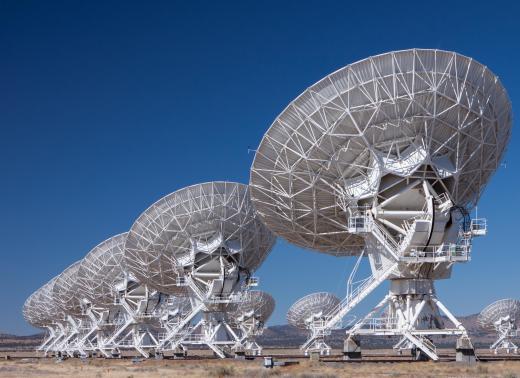What are Some Different Types of Supernovae?
 Michael Anissimov
Michael Anissimov
A supernova is a violent explosion which occurs as a stage of development in some stars. A supernova lasts from a few weeks to months, and during this time may release more energy than the Sun would emit over 10 billion years. Supernovae are capable of outshining their host galaxies. In a galaxy the size of the Milky Way, supernovae occur about once every fifty years.
If a supernova occurred 26 light-years away from the Earth, it would blow off half our ozone layer. Some paleontologists blame a nearby supernova for the Ordovician-Silurian extinction event, which occurred approximately 444 million years ago, during which 60% of ocean life died. The brightest supernova in human history was observed in 1006 by people across Eurasia, with the most detailed notes coming from China. With luminosity between a quarter and half that of the full Moon, this supernova was so bright that it cast shadows.
Supernova occur in one of two ways, and they are correspondingly broken up into types - Type I supernovae and Type II supernovae.

A Type I supernovae occur when a carbon-oxygen white dwarf, an Earth-sized stellar remnant left over from millions of years of hydrogen and helium burning, accretes enough mass to put it over the Chandrasekhar limit, which is 1.44 solar masses for a non-rotating star. Above this limit, the electron shells in the atoms making up the dwarf can no longer repel each other, and the star collapses. A stellar object containing about the mass of the Sun in a space equal to the Earth gets even smaller, until the necessary temperature and density is reached for carbon ignition. Within a few seconds, a major percentage of the carbon in the star fuses into oxygen, magnesium, and neon, releasing energy equivalent to 1029 megatons of TNT. This is enough to blow the star apart at approximately 3% the velocity of light.

A Type II supernova is also referred to as a core-collapse supernova. It happens when a supergiant star of over nine solar masses fuses elements in its core all the way up to iron, which no longer provides a net energy gain through fusion. Without net energy being produced, no nuclear chain reaction can occur, and an iron core builds up until it reaches the previously mentioned Chandrasekhar limit. At this point, it collapses to form a neutron star, an object that contains the mass of a Sun into an area about 30 km (18.6 mi) across — the size of a large city. The majority of the star outside the core begins to collapse also, but bounces against the super-dense matter of the neutron star, fusing all the remaining light nuclei rapidly and creating an explosion of similar scale to a Type I supernova.
Because Type I supernovae have a relatively predictable energy release, they are sometimes used as standard candles in astronomy, for measuring distance. Because their absolute magnitude is known, the relationship between absolute and apparent magnitude can be used to determine the supernova's distance.
AS FEATURED ON:
AS FEATURED ON:












Discuss this Article
Post your comments